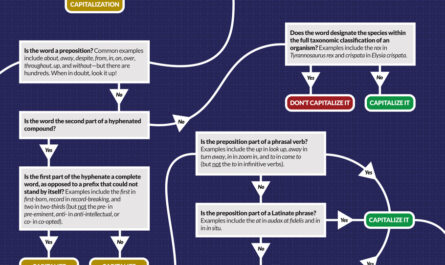What’s the point of a dek? No, really: what point is it trying to make?
You’d better know the answer to that question before you even try to write one.
In high school, I took an advanced English course called “Writer’s Craft,” enticed by the prospect of creating short stories and screenplays. And we did—but we also spent half the semester writing précis, which Webster’s succinctly describes as “a concise summary of essential points, statements, or facts.” Couldn’t’ve put it better myself.
At the time, I didn’t understand the importance of being able to write a précis. It’s a workmanlike form that produces unexciting results, and it doesn’t come up all that often in everyday life. But as I learned, précis writing’s real value lies in the process itself, the way it forces you to practice thinking holistically about your subject matter. The real challenge in précis writing is not just in creating something concise; it’s in identifying a text’s essential ideas.
The word “essential” is derived from the Latin for “being”—the essence or soul of a thing, the individual nature of a thing purified into a single property, the core quality that makes a thing what it is and not something else. (“Style and structure are the essence of a book,” as Vladimir Nabokov said. Or, to quote another famous thinker, “Moisture is the essence of wetness.”)
Of course, “essential” also connotes something necessary, as in “oxygen is essential to animal life.” These two senses are often conflated or confused (“essential oils,” for example, are not vital to our health; they’re a distillation of the plants from which they derive). When it comes to précis, the distinction is nonexistent: the points included in a précis are limited to what is necessary to convey a text’s most fundamental ideas. As you write a précis, that pair of concepts—in combination—should be front and center in your mind.
And that’s the crux of what makes writing a précis so difficult: it requires a thorough understanding of the text you’re trying to summarize and an ability to see past the details to what truly matters, which often means the digestion of abstract or unwieldy concepts. In general, a précis has no set length. A dek, on the other hand, is limited to just one or two sentences, which makes it a précis of radical pithiness.
But before we get to how to deks are born, let’s take a closer look at what a dek does.
Most publications that come in the form of articles have headlines. We’re talking magazines and newspapers here. Also called “heds,” headlines perform different functions depending on the type of publication—in newspapers, for example, heds tell you what the story is about. Fire Destroys Warehouse. Senate Passes Anti-corruption Bill. Cher to Star in Moonstruck Sequel. That kind of thing. In magazines, on the other hand, heds establish the theme or set the tone of a story, but they might not contain much hard information.
The dek (also called the “deck”) comprises the one or two sentences that appear below the hed, typically in type smaller than the hed but larger than the rest of the story. Heds are often styled in headline case (Wherein Almost Every Word Is Capitalized), but deks usually appear in sentence case (with only the first word and any proper nouns capitalized). In journalism, the hed and dek are sometimes collectively referred to as the “furniture.”
For current affairs stories, heds and deks are typically quite straightforward; the hed tells you what the story is about, while the dek supplies specifics:
The Border Wall Is Outliving Trump’s Presidency
Republican governors, federal regulations, and inaction in Congress are allowing construction to continue.
Collected from the New Yorker.
Who Really Benefits From Student-Loan Forgiveness?
The proposal’s prominence has less to do with its merits than with college graduates’ agenda-setting power.
Collected from the Atlantic.
In both these examples, the hed tells you what the story is about, while the dek provides more background to this topic, connects it to important figures or organizations in the story, or hints at causality. In current affairs stories, both in magazines and online, the hed often establishes the what or who of the story, while the dek alludes to the why or how.
That being said, the heds in magazines are often a bit more vague than the ones you’ll find in newspapers, especially when they deal with lighter subject matter. This means that the job of telling you what a story is about often falls primarily to the dek:
The End of Alcohol
Glamorous influencers are blending science and superstition to help people “change their relationship to drinking.” Did I miss out by getting sober the old-fashioned way?
Collected from Wired.
The Netflix Nightmare
Desperate for subscriber eyeballs, streamers are pulling back on edgy content—and acting more like the networks they trounced in the revolution.
Collected from Vanity Fair.
In these examples, the headlines still provide a general sense of the article’s topic—alcohol, Netflix—but don’t reveal much of what the story is actually about. It’s almost a reversal of the newspaper model: here, the dek reveals what the story is about, while the hed adds a bit more context. In terms of conveying information, the dek is doing all the heavy lifting.
It’s worth mentioning that these examples are taken from the web, where all-important SEO is affected by both hed and dek, so even vaguely worded headlines will contain some information pertinent to the story, even if it’s just a keyword or two. But in printed magazines, SEO is not a consideration—and for this reason, heds can take on a more poetic quality:
Lay of the land
Ahead of the country’s presidential election, we take a roadtrip across southern France to detect whether the far-right will oust Macron.
Collected from Monocle.
Into the Depths
Searching for shipwrecks from slavery’s hidden past—to help heal the present.
Collected from National Geographic.
Heds like these offer no real information about the subject matter of the story that follows. Especially in print, heds can afford to show a little personality, to be cute or funny, to rely on puns or clichés, to employ fancy rhetorical constructions that catch the eye, to emphasize tone over information. (In fact, heds often include visual elements like striking but hard-to-read typefaces, upside-down or discontinuous phrases, and other stylistic flourishes that exist primarily to look cool.) Deks, on the other hand, exist solely to convey a single idea. Detract from that at your own risk.
Given how much work deks do, the temptation to pack them full of information is understandable. Do not give into this temptation! Most details belong within the articles themselves—not in the deks that introduce them.
Rather, the point of a dek is to entice the reader to keep reading—to impress in the reader’s mind the question the article answers. It’s impractical to try to convey what an article is about without mentioning something of its contents, but as a rule of thumb, it’s best to limit the dek to the main topic the article explores—to its essence. The dek’s job is not to supply the data; it’s to intrigue readers with an impression of the article’s core premise.
For that reason, when it comes to writing deks, less is more. As mentioned, headlines run the gamut from telling you exactly what has happened (Fire Destroys Warehouse) to nothing at all (Into the Depths), but deks are surprisingly consistent across media, publications, and even departments: no matter what its hed is doing, a dek is there to convey the story’s main idea. And that’s all it should do. Above all, a dek should be lean—it should flesh out your topic without unnecessary embellishment.
As a rule of thumb, deks should include just enough additional information to specify how the who and what fit together to form the article’s central premise. The more detail you add, the less obvious it will be to the reader which detail stands as the primary thesis. The story itself can contain all manner of facts, asides, and supporting evidence. But anyone scanning the hed and dek hasn’t committed to reading that far—you may have only a fraction of a second to convince them, and every superfluous detail is a wasted gesture.
Of course, not all details are superfluous. Quite the opposite: the details are what set a story apart and make it worth telling. The most important consideration in modifying your what and who is whether or not those added details bring your central premise into clearer focus. A “tower” may become a “shimmering tower” without drawing too much attention away from the tower itself—but is it significant? Is the point of the story that the tower is spectacular? Or is it that the tower is over budget?
How One Rogue Exec Thrust Levi’s Into the Culture Wars
The very modern corporate tale of what happens when a top executive at a $6 billion public company can’t stop tweeting.
Collected from Bloomberg Businessweek.
Fernanda Melchor Writes Tragic Machismo
In her crime-inspired novels, male fear and desire are two sides of the same coin.
Collected from Vulture.
Is it important that the tale is “very modern” and “corporate,” or that her novels are “crime-inspired”? Absolutely—they frame the story with enough context to give potential readers a clearer sense of what they’re heading into. “The tale” and “her novels” just don’t pique the same level of interest. Just as importantly, adding these adjectives provides enough context to distinguish this tale and these novels from other tales and novels.
So these adjectives are not tossed in merely for the sake of color. By contrast, “The fascinating tale” or “her excellent novels” (or, for that matter, “a San Francisco–based executive”) might modify our overall impression of things, but they don’t tell us much about what makes the stories about them unique, interesting, or important. The adjectives these editors have chosen don’t just tell us more about the tale or the novels and how they’re different from other tales and novels—they tell us which of their characteristics are most salient to the article’s central premise.
Which ideas are truly integral when describing something is ultimately a subjective question, and précis writing is more art than science. And as with all writing, no rule is set in stone. And of course there’s always writerly license and editorial prerogative to consider. But generally speaking, a dek should be the shortest distance between two points—the who and the what—with just enough context to ensure they won’t be mistaken for any other.



